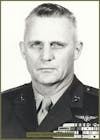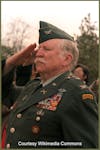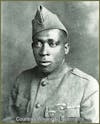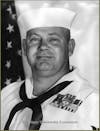Roy Benavidez: The Unbelievable Story of a US Army Green Beret & Medal of Honor Recipient
Listen to the remarkable story of Master Sergeant Roy Benavidez, a United States Army Green Beret who displayed exceptional bravery during the Vietnam War. Despite being grievously injured, Benavidez orchestrated and execute...
Listen to the remarkable story of Master Sergeant Roy Benavidez, a United States Army Green Beret who displayed exceptional bravery during the Vietnam War. Despite being grievously injured, Benavidez orchestrated and executed a daring rescue mission, saving the lives of several of his fellow soldiers. His courage and dedication to duty earned him the Medal of Honor, and I'm honored to tell you his story.
Please visit our website to learn more about him, and other American Heroes.
www.dutyandvalor.com
Sources:
Wikipedia.org
History.navy.mil
Allthingsinteresting.com
TheNMUSA.org
Grunge.com
Historynet.com
Thank you for listening to Duty & Valor!
Music by Amelie Leclerc. Artist's other music can be found here.
Please follow us on your favorite social media site.
Facebook
Instagram
Twitter
YouTube
Welcome back everyone. On today’s episode of Duty & Valor, you’ll hear the story of a man who took on the role of family provider at the age of 15 before enlisting in the Army. A man who worked hard to recover from wounds that were so severe he had been told he would never walk again. A man who acted without authorization and jumped onto a helicopter to rescue fellow Green Berets. This is the story of Medal of Honor recipient US Army Msgt. Roy Benzvidez.
Born on August 5th, 1935 in Cuero, TX, Raul Perez Benavidez, who would go by Roy, was born into a hard working family of Mexican and Yaqui Native American heritage. He was raised by his grandparents following the death of his father Salvador, when he was 2 years old, and his mother Teresa, when he was 7. His family struggled financially which led to Roy dropping out of high school at the age of 15 to help his family, and enlisted in the TX Army National Guard two years later in 1952.
After 3 years in the National Guard during the Korean War, Roy entered Army active duty in 1955. By 1959, he was accepted into and completed Airborne training and became part of the 82nd Airborne at Ft. Bragg, NC. Another major event in Roy’s life that year was marrying his wife Hilaria.
Early in his Army service, Roy was a model soldier and by the time the Vietnam War had started, he had completed special forces training to become an elite Green Beret as a member of the 5th Special Forces Group. The Army sent him to Vietnam in 1965, where he was a special forces advisor to the South Vietnamese Army.
Not long after arriving, Roy was on patrol with a South Vietnamese unit when he stepped on a landmine. Though he was quickly evacuated, he was badly wounded. He had lost consciousness and didn’t wake up until he was at Clark AFB in the Philippines. Roy lost all movement from the waist down and was transferred to Ft. Sam Houston in Texas where he was given a prognosis by doctors that devastated him. He was told that the damage to his spine was so severe that he would never walk again. This meant that his time in the US Army was now over.
Roy didn’t accept this and he was determined to walk again. On a nightly basis, he would pull himself out of bed and crawl on his elbows over to a wall where he used it to prop himself up. He started slowly, but eventually he was able to sit up, then as time went on, he was able to stand under the strength of his legs. He then made slow but steady progress and began to put one foot in front of the other, in a labored walk that was cheered on by other patients. His self-guided rehab was tough on him, and Roy was quoted as saying that he was often left in tears while pushing himself to walk again.
It took some time for his discharge paperwork to be processed and months later when it was set to be finalized, Roy stood up and walked in front of the astounded doctors. Seeing that he had made more progress than they could have ever believed, the Army decided to give Roy time to rehab before any final decision was made.
Roy was then sent back to Ft. Bragg to complete an 18 month rehab program. When he first returned, he could barely walk, but by the six month mark he was capable of throwing a rucksack on his back and running ten miles, securing his return to full duty.
Following his rehab, he received additional weapons training before returning to Vietnam in January 1968. He was now a Staff Sergeant and still dealing with ongoing pain from his wounds but he didn’t let it keep him from serving in combat.
On May 2nd, a twelve man team had gone out on patrol near the Cambodian border. This patrol was composed of three fellow Green Berets, team leader Sgt. 1st Class LeRoy Wright, Staff Sgt. Floyd Mousseau, Specialist Brian O’Connor, along with nine indigenous tribesmen of the Central Highlands of Vietnam. The men were tasked with gathering intel on enemy troops movements, but not long into this mission, the patrol was spotted and soon surrounded by 1,000 North Vietnamese infantry soldiers.
As Roy left mass that morning, he was walking by a communication tent when he heard the call for help come over the radio. Three helicopters had already attempted, but failed, to rescue the men. He heard that helicopters were going to attempt another rescue, so acted quickly and without authorization. With the words “I’m in”, Roy grabbed a medical bag and was armed with only a combat knife on his belt when he jumped on a departing helicopter piloted by Warrant Officer Larry McKibben.
They made their way to the men but McKibben couldn’t safely land. Roy told him to hover as low as he could, and when the helicopter was at a safer height, Roy jumped out and raced toward the pinned down patrol. He raced across 75 yards of heavy enemy fire and was hit in his right leg, and a grenade sent shrapnel into his face and head. Though injured, he took command of the situation and began to plan their evacuation. He picked up an AK-47 from one of the tribesmen that had been killed and engaged the enemy as he helped direct the rescue operation from the ground. On his command, the helicopters moved into position to attempt the men’s extraction.
Roy led a group of men, who were able to walk, to an awaiting helicopter all while firing back at the enemy. He then directed another helicopter to where the remaining injured men were, and he laid down suppressing fire as they loaded the men.
The enemy forces continued to concentrate their fire on the helicopters and the men on ground. McKibben’s helicopter was attempting to depart when he was shot and killed. His helicopter overturned and fell to the ground with the injured men aboard. At the same time, Roy was hit in the stomach by an enemy round and another grenade detonated nearby, this time hitting him in the back.
Even though he was severely wounded, Roy made his way to the crashed helicopter and placed the survivors in defensive positions before radioing help. He called in air support and guided strafing runs on the enemy. He also communicated that they needed close air support by helicopter gunships to allow other rescue attempts. While waiting on another helicopter, he was hit again by enemy rounds. They were eventually able to land and Roy carried wounded men over to the helicopter. During his rescue of the injured men, he also gathered or destroyed all of the classified material that the recon patrol was carrying.
While loading one man into the helicopter, an enemy soldier came up behind Roy and used his rifle to club him in the jaw. The soldier then stabbed Roy with his bayonet, before Roy removed it and used his own knife to kill him. With that knife still in the man’s body, Roy returned to aiding others onto the helicopter. He had to periodically stop to engage enemy soldiers who were trying to kill the pilot, doing all this while using one hand to keep in his intestines.
Roy resisted all attempts to get him onto the helicopter until he knew all men were aboard and he had secured or destroyed all of the classified material. Once he was assured he did all he could, he was pulled onto the helicopter.
In total, Roy was on the ground for what was called Six Hours in Hell where he sustained 37 bullet, shrapnel, and bayonet wounds, but he was credited with saving the lives of eight men.
After getting on the helicopter he fell motionless due to his injuries and pure exhaustion. Shortly after landing, he was laying down, still motionless, when he felt himself being placed into a body bag. He was in such bad shape, and suffering from so many wounds, that everyone thought he had died. He couldn’t move or talk but in what he called his “luckiest shot”, he was able to spit in the doctor's face to show him he was still alive. He returned to Ft. Sam Houston, recovered from his wounds. and he stayed in the Army until he retired in 1976 at the rank of Msgt.
Though he was awarded the Distinguished Service Cross for his actions that day, it actually took years before he would get our Nation’s top award.
On February 24th, 1981, President Ronald Reagan bestowed the Medal of Honor upon MSGT Roy Benavidez.
He lived until the age of 63, when he died on Nov. 29th, 1998, and he is buried at Ft. Sam Houston National Cemetery.
Thank you for listening to this episode of Duty & Valor. If you enjoy the podcast, we ask that you follow us and leave a review or 5 star rating, which will help new listeners find the show.
Links to the sources for today's show can be found in the show notes, as well as at dutyandvalor.com. And please join us next week where we’ll tell you the story of another true American hero.




















